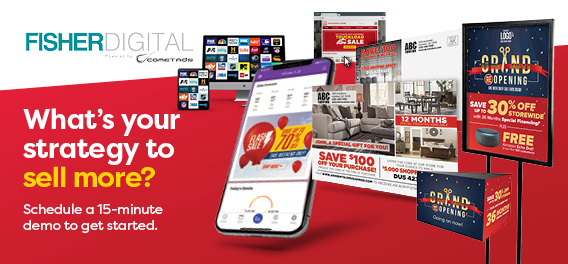Top 7 Facts About Consumers in 2018
July 02, 2018It’s easy to feel overwhelmed with all the recent data that has been released so far this year about consumers. Many studies have come out about consumers’ shopping preferences, online habits and use of technology.
We reviewed several consumer studied that were released so far this year to come up with our 7 favorite facts about consumers in 2018.
#1: Consumers say that purpose pays.
About 90% of consumers will buy from a company with a purpose. Almost 8 in 10 consumers say they are more loyal to a purpose-driven company. Most consumers feel a stronger emotional connection to companies with a purpose and are more willing to forgive any mistakes. Companies that are dedicated to both making money and making a positive impact on the world are purpose-driven companies, according to consumers’ definition.
Why It’s Significant: Showing that your brand is purpose-driven can be the deciding factor if a shopper buys from you or a competitor. It’s no longer enough to have the best sales promotion or the best product selection. Social media channels in particular are excellent ways to communicate company purpose messaging with consumers.
#2: More adults use YouTube than Facebook in the U.S.
73% of U.S. adults say they use YouTube while 68% report using Facebook. YouTube is the most-used by the 18-24 year-old demographic, according to Pew Research Center’s Social Media Use 2018 report.
Why It’s Significant: Video content dominates the social media landscape. Demand for video content has continued to climb in recent years. Video content should be part of your marketing mix.
#3: People are spending a significant amount of time on social media.
1 in every 3 minutes spent online is spent on social media. The average Internet user spends 2 hours and 15 minutes on social media sites per day. The top 5 reasons for using social media sites are: to stay in touch with friends, to stay up-to-date on current events, to kill spare time, to find entertaining content and to network.
Why It’s Significant: Social media accounts for a large chunk of consumers’ time on social media. Brands focused on just selling to consumers are missing the main reasons people use social media sites. Sharing content that entertains and informs should be top priorities (especially video content).
#4: Shopping and stress go hand-in-hand.
About 3 in 4 shoppers go “stress shopping.” The 16-24 year-old demographic goes “stress shopping” the most, but the 25-34 year-olds come in a close second in terms of stress shopping occurrences. The 55 and up age group is the least likely to stress shop.
Speaking of stress, most shoppers also find in-store shopping much more stressful than online shopping, citing unhelpful staff, difficult-to-navigate store layouts and shop attendants following them around the store as the top in-store shopping stressors.
Why It’s Significant: Find ways to cater to the stressed-out shopper. Can you set up a “stress-free” zone in your store? Do you have point-of-sale signage pointing out products for relieving stress? Is your store easy to navigate? The odds of a stressed out consumer visiting your store are high.
#5: Showrooming is more popular than ever.
The number of shoppers who visit stores to view products to buy online (showrooming) has increased 8% in the last year. Furniture and automotive are two categories commonly associated with showrooming, but about 75% of grocery shoppers showroom.
Why It’s Significant: Showrooming is prevalent across shopping categories. This shows that shoppers are looking for a deal and are willing to put in time and effort to track down said deal.
#6: You have 10 minutes to respond.
Consumers’ patience lasts about 10 minutes. 82% of consumers say an immediate response is very important when they have a marketing or sales question. Most consumers define “immediate” as 10 minutes or less.
Why It’s Significant: Slow responses to consumers have the potential to damage your relationship with shoppers. It’s essential to equip staff with resources to answer consumer questions, whether those questions are posed in person, over the phone or online.
#7: Messaging apps are big.
65% of consumers use messaging apps. The messaging trend has been steadily rising since 2016. More brands are taking advantage of messenger apps and functionalities on existing social platforms such as Facebook.
Why It’s Significant: Messaging is a more modern way to reach consumers than text message marketing. They are a convenient way for consumers to reach brands and a trending way for brands to respond.

